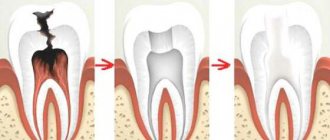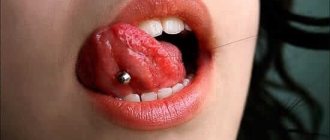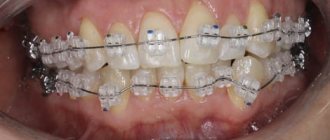From this article you will learn:
- Temperature after tooth extraction
- Why does the temperature rise after tooth extraction?
- In what other cases does hyperthermia occur?
- Are fevers associated with tooth extraction dangerous for children?
- How long does the temperature last after tooth extraction?
- How to help yourself at home with a hyperthermic reaction
- When you really can’t do without a doctor
- How to prevent your temperature from rising
- What is the role of the clinic in the prevention of hyperthermic conditions?
Tooth extraction in an adult or child is stressful, an operation, and unpleasant sensations before and after the procedure. And when it seems that everything is over, the patient discovers that he has a fever. Reaction – fear, repeated stress, worries.
Heat
Hyperthermia can be a natural reaction to surgery and a sign of a pathological condition. What should a patient do and when should he urgently seek medical help?
Why does the temperature rise after tooth extraction?
Hyperthermia is a natural reaction of the body to the action of pathogenic flora and viruses. They die at elevated temperatures. And the reason for visiting the dentist is precisely the infection of the oral cavity with pathogenic flora. The doctor’s task is to identify the causes of inflammation and stop its source.
Removal of a tooth
Reasons for tooth extraction:
- ineffectiveness of conservative treatment of periodontitis;
- impassable root canals;
- mobility of the dentition in periodontal diseases;
- damage to dental canals;
- purulent processes - abscess, phlegmon.
All diseases for which tooth extraction is one of the treatment methods cause infection with pathogenic flora. It is transmitted throughout the body by hematogenous route. Therefore, during treatment, and even more so during the removal of a molar, incisor or canine tooth, the wound may become infected.
If a wisdom tooth has been extracted, it is usually accompanied by a large wound. Stitches are required. Due to the weakness of the walls of the blood vessels, a hematoma can form. Before the procedure, the surgeon must warn the patient about this.
Therefore, an increase in temperature is a normal reaction to injury. But only if hyperthermia lasts 1–2 days after surgery and does not rise above 38 degrees. If the temperature increases and additional symptoms are added, then this is a reason to consult a doctor and find out the causes of this condition.
If there is bleeding
After difficult removal of the figure eight, bleeding may occur. It needs to be installed, but it is not always possible to do this in a short time. In severe cases, the dental surgeon places sutures on the postoperative wound and performs tamponade. Then the patient is recommended to apply a cold compress to the cheek for some time. It helps stop bleeding and quickly relieve swelling.
It is very important to understand what causes bleeding after surgery. Among the most common reasons:
- arterial hypertension or a sharp one-time increase in blood pressure;
- the use of anesthetics containing adrenaline (such drugs help dilate blood vessels);
- injury to the wound with the tongue or foreign objects;
- taking medications that reduce blood clotting;
- performing heavy physical work shortly after the intervention.
If bleeding continues throughout the day, this is abnormal. In such a situation, it is recommended to make an appointment with a doctor.
In what other cases does hyperthermia occur?
A visit to a maxillofacial surgeon and surgery is a stressful situation. The temperature can rise even against the background of emotional experiences.
Possible reasons for the increase in temperature after molar extraction:
- ARVI, acute respiratory infections, relapse of tonsillitis - intervention in the oral cavity causes a decrease in immunity. Therefore, surgery can be a provoking factor in chronic sore throats, making the patient more susceptible to pathogenic flora. Rhinorrhea, sneezing, coughing, and pain when swallowing are added to hyperthermia.
- Alveolitis is an infection of the tooth socket. After its removal, a blood clot forms in the socket.
- Its task is to prevent wound infection. If the doctor's recommendations are not followed - eating, chewing on the operated side, frequent rinsing - the clot detaches and the wound becomes infected. The result is inflammation, pus, severe pain and an increase in temperature to pyretic values.
- Mistakes by a dental surgeon when removing a tooth include excessive tissue trauma, leaving fragments and parts of the root in the socket.
If any unpleasant symptoms appear after removal of a molar, incisor or molar, you should contact an oral and maxillofacial surgeon.
What complications can lead to this?
Extraction of the third molar is carried out with significant violations of the integrity of the soft tissues. An increase in temperature on the first day after manipulation is considered a natural physiological reaction of the body to such an intervention. But if it lasts for several days, this may indicate the development of complications.
| Name | Description |
| Alveolitis | Develops 2-3 days after removal of the painter. It manifests itself as severe pain in the socket area, radiating to the head. The lymph nodes under the jaw also become enlarged, and a strong unpleasant odor appears from the mouth. |
| Leaving part of the root | Accompanied by a sensation at the site of removal of the presence of a foreign body. Intense throbbing pain appears. The gums swell. When chewing or pressing on the removal site, severe pain occurs. |
| Leaving a foreign object in the socket | After a couple of days, the gum tissue swells, the hole is filled with gray exudate. A twitching pain appears. |
| Infection | The tissues of the socket and gums quickly become inflamed, severe inflammation of the gums and local hyperthermia develop, and the cheek swells. The pain is constant. |
| Hematoma | A bruise is visible at the site of removal, and the periodontal tissue and cheek swell. In their area there is a partial decrease in sensitivity. |
| Sinusitis | Develops as a result of infection of the maxillary sinuses. Accompanied by headache and weakness. Nasal discharge includes clots of pus and abnormal mucus. |
| Cyst | Violation of the integrity of the cyst leads to the appearance of pathological discharge from the socket. Aching pain and swelling of the gums appear. Over time, the inflammatory process spreads to the submandibular tissues. |
| Allergy to anesthesia | This reaction is caused by resistance to the local anesthetic drug. It may be accompanied by a feeling of fullness in the socket area, as well as pain and swelling. |
Attention! Temperature after wisdom tooth removal is the first sign of infection of the postoperative wound. Untimely treatment can lead to the development of sepsis and toxic shock, which pose a threat to human life.
Therefore, it is important to seek medical help on the first day after an increase in body temperature during wisdom tooth extraction.
Are fevers associated with tooth extraction dangerous for children?
Extraction of a molar, incisor or canine for children is carried out if the baby tooth interferes with the growth of the permanent one or when it is completely destroyed. But this is a simple removal, since baby teeth are not held tightly and, often, pain relief is not even required. The wound is small and does not bleed.
Fever after tooth extraction
An increase in temperature to 37–37.5 degrees is a normal reaction of the body. If the readings on the thermometer are higher, then you need to consult a dentist. If pathologies in the oral cavity are excluded, you should undergo an examination by a pediatrician.
When is elevated temperature normal?
Very often, after a tooth is pulled out, a person experiences various unpleasant symptoms. They are due to the fact that the figure eight has long and winding roots. It is also far away and always difficult to get to. In the absence of free access to the crown, removal always turns out to be quite traumatic.
In the first two days after extraction of the unit, the following phenomena are considered normal:
- increase in body temperature to 37-38°C;
- swelling and redness of the socket;
- pain in the wound area;
- general weakness.
If healing proceeds without complications, these symptoms disappear within one to two days. Of course, swelling and soreness take longer to go away, but body temperature should not remain elevated for a long time.
How to help yourself at home with a hyperthermic reaction
After extraction of a molar, canine or incisor, the surgeon will give recommendations and explain possible reactions of the body. Therefore, the patient must follow the rules of oral care:
- Do not consume food or drinks for 2 hours after the procedure. Do not chew on the affected side of the jaw.
- Take antibiotics as prescribed by your doctor, rinse your mouth with antiseptic solutions.
- If your temperature rises, you need to monitor your condition. It is allowed to take antipyretics based on paracetamol or ibuprofen as prescribed by a doctor. For adults - in tablet form, for children - in the form of syrups in dosages according to age or suppositories at night or during daytime sleep.
- Drinking plenty of fluids and rest are recommended. The patient should be in a ventilated area. There is no need to wrap yourself up or do any thermal procedures.
What you can and cannot do after tooth extraction
If the temperature does not subside on its own or the condition worsens, you should contact a medical facility. If it rises to 39 degrees or higher, call an ambulance.
How long does it take for the mucous membrane to heal after removal?
The duration of the healing process depends on a large number of factors. First of all, the difficulty of removal matters. The removal technique also has an effect, that is, extirpation of the roots in parts, cutting of the tooth. It is important to take into account the initial condition when visiting the dentist. The hole will take longer to heal if the tooth is located outside the dental arch, grew in the jaw at an angle, or was located horizontally in the dentition. The presence of an inflammatory process near the tooth, especially signs of purulent inflammation and pericoronitis, also increases the healing period.
When sutures are applied after a simple removal, within a week the patient will forget about the procedure, but it is too early to think about prosthetics or implantation. With complex removal, the healing process will take slightly longer. If complications arise after surgical treatment, wound sanitation, treatment, and suturing are required, then the time for complete healing may increase to 20 days. Complete restoration of the mucosa takes at least three weeks. Only after this can implantation and prosthetics be performed in the area of the removed wisdom tooth.
Normally, gums must go through several stages:
When going to the dentist, it is recommended to immediately plan your day. This is especially true if there are already signs of inflammation or the teeth are severely damaged, that is, a difficult extraction is expected. Recommendations after wisdom tooth removal include, first of all, complete rest on the day after surgery. You should not make sudden movements, bend over, visit baths and saunas, or take a hot bath. It is prohibited to play sports or do any work while bending over. The best option would be complete rest. There is no need to do any special procedures on the day of the operation.
Smokers are advised to abstain from cigarettes if possible for three days or more if there are signs of complications. Nicotine causes vasoconstriction and disrupts tissue nutrition, which slows down regeneration processes. In addition, the risk of wound infection increases.
After a couple of days, you should visit the dentist who performed the procedure to assess the condition of the tissue and the healing process. This must be done even if the patient is not bothered. If signs of complications appear, pain and swelling increase, and bleeding does not stop, consult a doctor without waiting for the appointed date.
If sutures were placed on the wound, they are removed after 8-10 days, or a follow-up examination is scheduled if self-absorbable material was used for the sutures.
Do not touch the wound or try to remove part of the clot or remnants of the medicine in the form of sponges. This will only worsen the situation and cause complications.
What do we have to do?
On the first day, do not rinse your mouth. From the second day, procedures can be carried out. In this case, you do not need to intensively rinse the contents of the hole; just hold the solution on the sore side for a few seconds and spit. You need to repeat the procedure several times a day, especially after meals.
Chlorhexidine, furatsilin, miramistin, and potassium permanganate can be used as a rinsing solution. It is also possible to use herbal decoctions, for example, sage, chamomile, calendula or dental collection.
Pain may occur after the anesthetic wears off. To eliminate them, the dentist must prescribe analgesics. If there is no prescription, you can take any painkiller that the patient is used to using for pain. If the pain increases and the tablets do not help, you cannot increase the dosage. An increase in symptoms indicates a complication that requires medical intervention.
If you don't want to take medication, you can use a cold compress. These can be ice cubes wrapped in a towel. They need to be applied for several minutes, avoiding hypothermia of nearby organs, in particular the ear and tonsils.
If there is a high risk of inflammation, as well as if there is purulent discharge at the time of surgery, the dentist will definitely prescribe antibiotics. The doctor calculates the name of the drug and duration of use individually.
Features of nutrition after surgery
After wisdom tooth removal, it is forbidden to eat for two hours. If after the specified time the effect of the anesthetic still persists, it is better to wait until sensitivity appears. Eating food with a numb tongue and cheeks can cause injury to the mucous membrane.
On the first day after surgery, you can only eat warm food and drinks. Products should be soft, for example, cereals, chopped soups, yoghurts. Next, you should follow simple recommendations for several days:
- Avoid hot or too cold food.
- Avoid eating hard foods such as crackers and nuts.
- Chew food only on the healthy side so as not to put stress on the wound.
- After eating, be sure to rinse your mouth.
- You can include more fruits and vegetables in your diet to boost immune strength, or supplement with complex vitamins from the pharmacy.
You cannot drink alcoholic beverages. It is also recommended to reduce sweet foods in the first days, as they create a favorable environment for the development of bacteria.
Features of oral hygiene after removal
On the first day after extirpation, you should abandon the usual brushing of your teeth, limiting yourself to a light rinse before going to bed to remove any remaining food. The next day, you are allowed to use a toothbrush and toothpaste, but the surgical site is treated with special care. When brushing your teeth, do not forget that you cannot actively rinse your mouth. After three days, the wound will have healed and you can return to your usual hygiene regimen and brush your teeth twice a day.
When you really can’t do without a doctor
Any hyperthermia lasting more than 3 days is a reason to consult a doctor.
Symptoms after tooth extraction
Symptoms for immediate examination by a dental surgeon:
- increased pain 1–2 days after molar extraction;
- swelling of the gums, cheeks;
- gum hyperemia;
- discharge of blood and pus from the wound cavity;
- bad breath;
- enlarged lymph nodes under the lower jaw, behind the ears.
The dentist will conduct an examination. According to indications - cleaning and washing the wound, removing tooth fragments or roots, applying antibacterial drugs to the wound, suturing the wound.
After cleaning the wound, the inflammation subsides and the temperature drops. The doctor will prescribe additional treatment - a visit to wash the wound and apply antibacterial dressings, take antibiotics, rinse with antiseptics.
Dentist help
If you experience accompanying alarming symptoms, be sure to consult a doctor!
If alarming dynamics occur in parallel with body hyperthermia, you should immediately visit a doctor. During the examination, you must describe in detail the symptoms that are bothering you. The dentist will conduct a visual examination of the oral cavity and order an x-ray.
After a full examination and diagnosis of the cause of the increase in body temperature, the specialist chooses a method of providing assistance.
- If there is a cyst or root remains in the socket, they are removed using local anesthesia. Next, the wound is treated with antiseptic solutions, and a course of antibacterial therapy is prescribed.
- In the presence of additional mechanical damage to the tissues near the extracted tooth. These may be ruptures of the cheek, periodontal tissue, sharp edges of the jaw or alveoli. To eliminate such defects, the damaged tissue is cut off, followed by straightening the deformed area. If necessary, stitches are placed and a sterile tampon is placed to stop bleeding for 15 to 25 minutes.
Regardless of the type of care provided, it is necessary to strictly follow medical prescriptions and carefully monitor oral hygiene in the postoperative period. This will not only speed up the recovery process, but also prevent the development of serious complications.
How to prevent your temperature from rising
- After extraction of a molar, incisor or molar, the doctor’s recommendations should be followed. How to behave as a patient:
- do not eat or drink for the first 2 hours;
- do not chew on the affected part of the jaw;
- do not smoke – preferably for several days and definitely on the first day after the procedure;
- do not rinse your mouth without a doctor’s prescription - this helps wash out the blood clot;
- Until recovery, refrain from visiting public places - baths, saunas, procedures with a cosmetologist;
- do not touch the wound with your fingers or a toothbrush;
- take prescribed antibiotics, anti-inflammatory drugs;
- come for examination at the appointed time;
- do not heat or rinse your mouth with alcohol-containing preparations, vodka, or alcohol.
A day or two after removal, the doctor will prescribe baths with antibacterial drugs. The liquid should be collected and held, but not rinsed.
When to sound the alarm
- It happens that removal turns out to be difficult. Then the doctor warns the patient in advance about possible complications and tells him to come for a follow-up appointment in the coming days. You should sound the alarm if:
- Symptoms of a viral disease are observed. Then the fever persists for longer than three days. Cough, runny nose, and throat congestion appear. Efficiency decreases.
- After one or two days the temperature does not decline, but on the contrary, begins to rise. If it stays at 38.5-39 degrees throughout the day, you should seek medical help as soon as possible.
- Signs of inflammation in the oral cavity have become more pronounced. The gums are more swollen, accumulations of pus are visualized in the socket area, and there is no blood seal. This indicates complications.
Dry socket is especially dangerous. They talk about it if a dense blood clot does not form at the site of the pulled out tooth. The wound remains open to infection, which means that regenerative processes do not proceed correctly.
What is the role of the clinic in the prevention of hyperthermic conditions?
The clinic’s task is to create all conditions for the patient’s recovery and prevent the development of complications. What is required for this:
- The operation is performed under aseptic conditions by an experienced doctor in compliance with all standards and treatment protocols.
- The surgeon must explain to the patient the sequence of his actions, the rules of behavior after removing an incisor, molar or canine. Prescribe treatment and conduct follow-up examinations. If necessary, adjustment of prescriptions.
- If complications develop, provide high-quality and timely medical care.
Recovery after surgery depends on the quality of the surgeon’s work and the patient’s compliance with his recommendations. Hyperthermia after tooth extraction is a normal reaction of the body. You shouldn't be afraid of her. If the temperature has risen above pyretic values - from 38 degrees and above, then you need to urgently contact the clinic for examination and treatment correction.
In what cases can you lower the temperature yourself and by what means?
There is no need to lower the temperature to 38 degrees.
The formation of a blood clot, the absence of infection of the socket and the remains of the wisdom tooth root in it indicate its successful extraction.
With such a clinical picture, there is no need to fear the development of complications. But, it is worth understanding that after such manipulation, in the first 2–3 days there is a high probability of an increase in body temperature within 39 degrees.
If its readings do not exceed 38 degrees, then there is no need to lower this temperature. This low-grade fever is a natural reaction of the body that helps fight a bacterial infection.
If the indicators begin to increase and remain for more than 3 days, it is necessary to suspend this process. For these purposes, it is recommended to use pharmacological antipyretics and preferably with an antibacterial effect.
Among them, the most popular are:
- Nemisil.
- Paracetamol.
- Nurofen.
- Efferalgan.
- Nimulid.
Reference! Many antipyretic drugs have a large list of contraindications and side effects, so they should be prescribed exclusively by a dentist.











